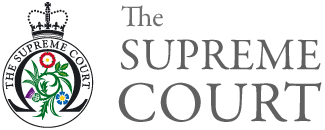R (on the application of Association of Independent Meat Suppliers and another) (Appellants) v Food Standards Agency (Respondent)[2021] UKSC 54 On appeal from: [2017] EWCA Civ 431
Date:8 December 2021
Justices
Lady Hale, Lord Hodge, Lady Black, Lord Lloyd–Jones, Lord Sales
Background to the Appeal
This appeal concerns the operation of the European Union ("EU") system for the inspection of meat products to ensure that proper health and safety standards are maintained. The facts of the case arose at a time when, pursuant to the Brexit transition arrangements, EU law was applicable. In 2019, the Supreme Court made a reference to the Court of Justice of the European Union ("CJEU") on this issue, and the CJEU has now delivered its judgment. The Supreme Court now determines this appeal based on that judgment.
The background facts concerned a slaughtered bull which was declared by the Official Veterinarian ("OV") on behalf of the Food Standards Agency ("FSA") as meat unfit for human consumption. The bull’s owner, the Cleveland Meat Company ("CMC"), challenged the OV's opinion and claimed that – should CMC not surrender the carcass voluntarily – the OV would be required to seize the carcass under section 9 of the Food Safety Act 1990 ("section 9") and take it before a Justice of the Peace ("JP") to determine whether it should be condemned. Under the section 9 procedure, the JP would have power to grant CMC compensation for the carcass if the JP disagreed with the OV’s opinion, after hearing expert evidence. The FSA replied that there was no need to use this process as there were other methods available to it to ensure the carcass did not enter the food supply chain.
The OV served on CMC a notice requiring it to dispose of the carcass. CMC, alongside the Association of Independent Meat Suppliers, brought judicial review proceedings to challenge FSA's assertion that it was not required to use the section 9 procedure and, in the alternative, to claim that it was incumbent on the United Kingdom to provide a method of challenging the OV's decisions. The judicial review claim failed at first instance and in the Court of Appeal. CMC and the Association appealed to the Supreme Court.
The Supreme Court asked two questions of the CJEU: (i) was the section 9 procedure compatible with the food safety regime laid down by EU law? (ii) if EU law requires that there be an appeal procedure to challenge an OV’s decision, what should be the grounds of challenge?
Judgment
The Supreme Court unanimously dismisses the appeal. The judgment is given by Lady Hale and Lord Sales, with whom Lord Hodge, Lady Black, and Lord Lloyd–Jones agree.
Reasons for the Judgment
On the first question, the CJEU answered this in the negative. EU law entrusted the OV with the responsibility for ensuring that meat was fit for human consumption as the person best qualified to carry out such checks. The section 9 procedure, however, would undermine this responsibility by allowing for the replacement of the OV by a JP ruling on the merits of the case. Although EU law required that a slaughterhouse such as CMC should be able to challenge a decision of the OV, the section 9 procedure was not appropriate: it did not allow a party such as CMC to bring a legal action of its own initiative (as it required the OV to present the carcass to a JP) and, further, did not authorise the JP to annul or lift the effects of the OV's decision. National legislation of the kind in section 9 was therefore precluded by EU law. [10]
On the second question, the CJEU considered that to determine the grounds of challenge which EU law required should be available in relation to a legal challenge to a decision taken by a national body pursuant to EU law, it was necessary to take into account the purpose of the decision and to ensure that its effectiveness was not undermined. [11]
Applying this approach, the CJEU considered the relevant factors for determining the degree of rigour appropriate for a legal challenge to a decision of an OV. It had regard to number of factors, including the complex technical nature of the OV's role and the requirement for the OV to provide a statement of reasons. Further, the OV's responsibility under EU law did not require a member state to establish a procedure allowing for judicial review of all the OV's assessments of the specific facts found in a given case. In this context, therefore, judicial review of an OV's decision on conventional public law grounds, including applying the wrong test, irrationality or deciding without a sufficient evidential basis, provided a slaughterhouse like CMC with appropriate effective judicial protection. [12]
In light of the CJEU's answers, the Supreme Court decides that the section 9 procedure is not compatible with the requirements of EU law, whereas judicial review of a decision of an OV such as that in the present case is compatible. There was therefore no foundation for CMC's contention that the FSA was required to use the section 9 procedure, nor any basis for the alternative complaint that the United Kingdom has failed to provide an appropriate means to challenge decisions taken by an OV. [13]
References in square brackets are to paragraphs in the judgment
Note
This summary is provided to assist in understanding the Court’s decision. It does not form part of the reasons for the decision. The full judgment of the Court is the only authoritative document. Judgments are public documents and are available online. Decided cases
